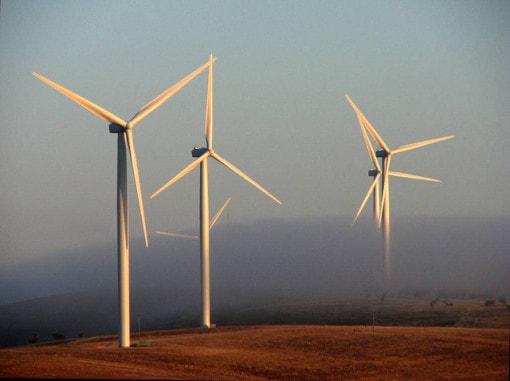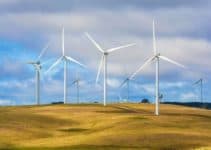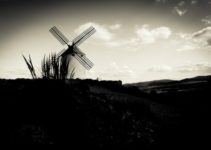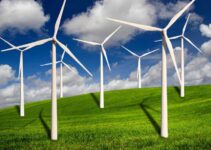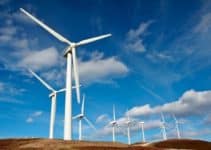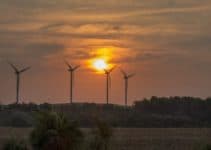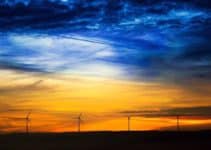Wind turbines are the evolution of the classic windmills that can be seen in more rural areas of the world. Their purpose is to reduce reliance on fossil fuels to create energy and also to create energy in a less wasteful manner. They operate by using the kinetic energy of the wind, which pushes the blades of the turbine and spins a motor that converts the kinetic energy into electrical energy for consumer use.
Wind Turbines are rotating machines that can be used directly for grinding or can be used to generate electricity from the kinetic power of the wind. They provide the clean and renewable energy for us of both home and office. Wind Turbines are a great way to save money and make the environment clean and green.
This process has been adapted for use for various applications and can be seen in use by boats, traffic signs, or whole communities that use a wind farm for power. The development of wind turbines is a major step towards overhauling the way we produce our energy.
Basically there are two types of wind generators, those with vertical axis and those with horizontal axis. They can be used to generate electricity both onshore and offshore. Wind Turbines can be combined to form clusters called “wind farms” which are used by large companies to use that power as their backup. Apart from generating electricity they can also be used for grain-grinding, water pumping, charging batteries.
Historically, wind turbines were used for sailing, irrigation and grinding-grains. It was in the early 20th century that it was used for generating power. Today, large wind turbines can be seen in the rural areas or near the sea coast where speed of the wind is generally throughout the day. Device called wind resource assessment is used for estimating the wind speed.
Wind Turbine Components
Wind turbine systems are made up of many different pieces of equipment that all serve a purpose in delivering electricity where it is intended to go. Of those many different pieces, the below list serves as a general blueprint for the main components that can and often times will be found in wind turbine systems regardless of the type of design.
- Rotor – The rotor is made of blades that are attached to a center piece. The blades are shaped such that when the wind pushes against them they turn
- Pitch Drive – Used to rotate blades to accommodate for high-speed wind
- Nacelle – The rotor is attached to a housing unit called a nacelle, which protects various other components necessary to the wind turbine operation
- Brake – Necessary to slow the rotor down
- Low-Speed Shaft – Attaches to the rotor and turns as the rotor turns on a 1:1 ratio
- Gear Box – Serves the same function as a car, the rotor spins slowly as the wind pushes against it and the gearbox or transmission increases that rotational speed for the generator
- High-Speed Shaft – Attaches to the gearbox and generator and spins at a higher speed than the rotor or low-speed shaft
- Generator – Actual mechanism that converts the rotational kinetic energy into electricity
- Wind Vane – Detects direction of wind and adjusts the rotor and nacelle to compensate
- Yaw Drive – Keeps the rotor and therefore the turbines facing the wind
- Tower – Elevates the aforementioned components to an altitude that optimizes wind exposure
How Do Wind Turbines Work?
Wind Turbines operate on a system comprised of many critical components that allow kinetic wind energy to be transformed into electrical energy. No matter the type of wind turbine system, they all work off the same principle that allows a generator to produce electricity. This principle is that if magnets are rotated around a coil of wire, or a coil of wire rotates within a magnetic field fast enough electricity is produced.
The total contraption of magnets and conductors make up the generator. Using the wind to turn blades creates the force needed to turn the magnets or the coil of conductor which in turn creates electricity. Below is a step by step process that highlights the methods by which a wind turbine actually comes to produce electricity.
1. Tower is constructed that puts the wind turbine system at the correct altitude where wind travels at a higher and more constant rate
2. Rotor blades are exposed to wind which forces them to start turning
3. As the rotor spins, the low-speed shaft, which is connected to a gearbox, spins at the same rate
4. The gearbox takes this slow rotational speed and through correct gearing turns it into a faster rotational speed
5. The high-speed shaft, which is on the outgoing end of the gearbox and connected to a generator, spins at a higher rate of speed
6. The generator spins at this high rate of speed which spins magnets around a coil of metal wire and generates electricity
7. The electricity travels from the generator through wires to the necessary applications whether it be direct appliances or a battery
Here is a info graphic on how wind turbines work that will help you understand about the various components of wind turbines.
Types of Wind Turbines
There are two main types of wind turbines that can be seen in design and implementation in the wind energy industry today. The first and most common type is the horizontal axis wind turbine that relies on a horizontal shaft that runs perpendicular to the blades which spin vertically. These wind turbine systems can be seen in use in major wind farms as well as solo operations.
The second type which is less common among the wind energy industry is the vertical axis wind turbine. As one might be able to infer, the vertical axis turbine has a vertical shaft in which the blades or rotor are connected to and spin horizontally. There are many variations of the vertical axis wind turbine but the major benefit is that maintenance is easier because the gearbox and generator are more accessible.
- Horizontal Axis Wind Turbine – This is the standard type of wind turbine where the low-speed shaft that connects to the rotor is horizontal. There are various ways to construct this wind turbine but they all follow the same concept as outlined above. The rotor spins with the wind and the rotational kinetic energy is converted to electrical energy through a generator
- Vertical Axis Wind Turbine – This type of wind turbine is less common but has an advantage in that the rotor does not need to face into the wind. The shaft connecting to the rotor is vertical and the gearbox and generator are generally at the bottom of the tower. There are many types of vertical axis wind turbines all of which follow the same concept of force along the X-axis (parallel to the ground) as opposed to horizontal axis turbines which use force along the Y-axis (perpendicular to the ground).
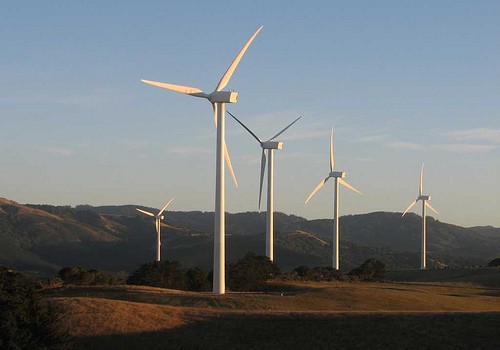
The following are different variations that come from vertical axis wind turbine systems. Many of these were engineered decades ago and are no longer seen in use today, however the designs for these have been adapted and tweaked such that newer models can be developed that are more efficient with less problems than the older ones.
a. Darrieus Wind Turbine – This vertical axis wind turbine uses curved blades that rotate and creates an internal force of wind that enables the rotor to spin at high speeds regardless of the wind speed. The downside of this is that this turbine generally requires an external motor to start spinning
b. Giromill – A variation of the Darrieus Wind Turbine in that it uses an H shaped rotor. The difference between the two is that the giromill uses straight blades that run parallel to the shaft. Other than that, the two operate on the entirely same principal
c. Cycloturbine – A type of giromill that not only has straight blades running vertically but also that the straight blade can itself rotate around its center axis. The advantage in this type of turbine is that it generates the most amount of power and can self-start (start without any external assistance).
d. Savonius Wind Turbine – This vertical axis wind turbine relies on the principles of drag and wind resistance to function. The blades are shaped like an S with the two curved parts of the S moving with the wind. The curved part creates less drag and therefore the rotor is able to spin. These turbines do not generate much energy.
e. Vortexis Wind Turbine – This is the most recent development of vertical axis wind turbines. It has seen use in Afghanistan and Iraq by special forces needing to power their devices. This turbine has two sets of blades, one smaller set that sits in a circle and one bigger set that surrounds the smaller set in a larger circle, that act in a gearbox like fashion. The outer set of blades use the wind to spin and by that set of blades spinning they force their own wind to turn the smaller inside set of blades. These blades are connected to the shaft which then turns a generator.
